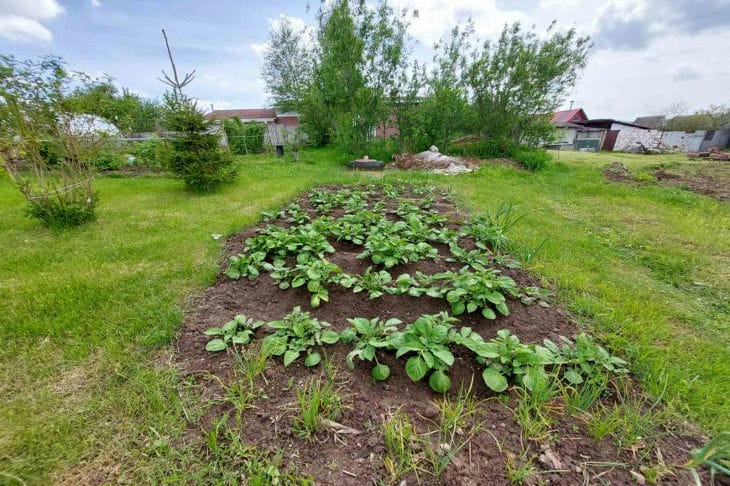What to do in the garden after the rain: tips for experienced and novice gardeners
The rain stopped, the air was filled with freshness, and the garden sparkled with new colors.
But behind this natural beauty there are a number of tasks that are important to complete so that the plants continue to delight with their harvest and healthy appearance.
What should you do in your garden after it rains to make the most of natural moisture and prevent potential problems?
Inspection of the condition of plants
The first thing you should do after rain is to carefully check your plants. Rain can damage delicate leaves and stems, especially if it was accompanied by strong winds or hail.
Check for broken branches, washed-out seeds, or damaged plants. If you find damage, remove the broken parts to prevent disease.

Soil cultivation
After rain, the soil becomes loose and moist, which is the ideal time to cultivate it.
Loosen the soil around the plants to improve aeration of the roots and prevent waterlogging, which can lead to root rot. Pay special attention to shallow-rooted plants, such as strawberries, which are particularly sensitive to excess moisture.
Weed removal
Moist soil makes it easier to remove weeds because their roots are more easily pulled out.
Remove weeds so they don't compete with your crops for nutrients and moisture. This will help your plants grow stronger and healthier.
Checking the drainage system
If you have a drainage system on your property, be sure to check its condition after rain. Make sure there are no blockages and that water flows freely. If problems are found, fix them immediately to avoid waterlogging of the beds.
Strengthening the supports and tying up the plants
Heavy rain and wind can weaken the supports for tall plants and vines. Check that all ties and supports are in place.
Stake plants that need extra support to prevent breakage and ensure proper growth.
Snail and Slug Control
The damp environment after rain creates ideal conditions for snails and slugs to thrive, which can cause significant damage to your crops.
Inspect your garden and remove these pests manually or with special traps and baits. You can also use natural remedies such as ash or coffee grounds to scare away unwanted guests.
Fertilization
After rain, plants actively absorb moisture, and this is the ideal time to apply fertilizer.
Use organic or mineral fertilizers to provide your plants with the necessary nutrients. Fertilizers diluted in water easily penetrate the soil and quickly reach the root system.
Treatment against diseases and pests
High humidity promotes the development of fungal diseases. Treat plants with preventive means against diseases and pests. Use environmentally friendly products to protect your crop and the health of your family.
Harvesting
Rain often speeds up the ripening of fruits and vegetables. Check your plants and harvest when they are ripe. This will prevent the fruit from becoming overripe and rotting, and will also allow room for new fruit to grow. Harvesting immediately after rain also prevents pest damage.
Mulching the soil
Mulching helps retain moisture in the soil and protect plant roots from overheating. After rain, renew the mulch layer using organic materials such as straw, leaves, or compost. This will also help suppress weed growth and improve the soil structure.
Planning further work
After completing the work, assess the condition of the garden and make a plan for future actions. This way, you will be able to maintain the garden in excellent condition and get a good harvest.
